Guest blog by James Rogers
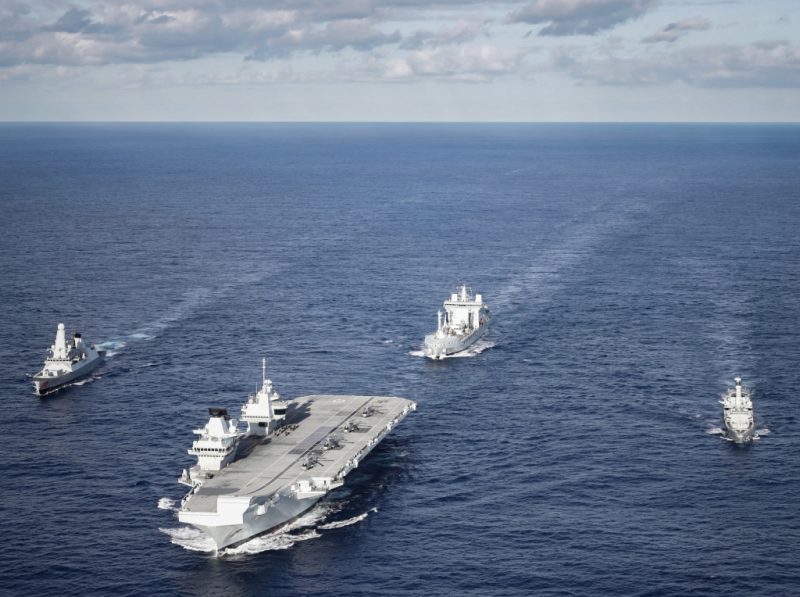
Following his General Election victory British Prime Minister Boris Johnson promised the biggest shakeup of foreign and defence policy since the end of the Cold War. Now that he has secured a large Parliamentary majority, he can push forward to reconfirm the United Kingdom’s (UK) place in the world. The Royal Navy’s new aircraft carriers – the Queen Elizabeth Class – will be key to projecting that position, both at home and abroad.
A few days before the general election, HMS Prince of Wales was commissioned into the Royal Navy, adding another 70,000 tonnes to the British fleet. This mighty vessel joins slightly older sister HMS Queen Elizabeth – the two largest warships ever procured for the Royal Navy.
HMS Queen Elizabeth is an impressive beast. Commissioned in 2017, the aircraft carrier is currently undergoing sea trials and is likely to become fully operational in 2021. Over the past few years, a plethora of British officials and ministers have asserted that Queen Elizabeth will be sent on a long-range maiden deployment. This idea was put forward most forcefully by Gavin Williamson, then Secretary of State for Defence, in January 2019, in a speech at the Royal United Services Institute (RUSI). There, he stated that the first operational mission of the super-carrier would ‘include the Mediterranean, the Middle East and the Pacific region.’ Boris Johnson, while Foreign Secretary, and Sir Kim Darroch, the former British Ambassador to the USA, also claimed that HMS Queen Elizabeth would deploy as far as the Pacific.
Historically, this reflects the desire of major powers to demonstrate visibly their naval reach. Indeed, December 16, 2019 marks the day 112 years ago when USS Connecticut sailed from Hampton Roads, bound for Trinidad. This vessel – painted brilliant white – was the lead battleship of what was to be labelled the ‘Great White Fleet’. Geo-strategically, this was an effort to impose on Japan – increasingly confident after its crushing defeat of Russia during the Battle of Tsushima in 1905 – the ability of the USA to overcome its disjointed continental aspect. Sent just before the completion of the Panama Canal, the Great White Fleet’s objective was to demonstrate America’s ability to project maritime power from the Atlantic to the Pacific in the event of war.
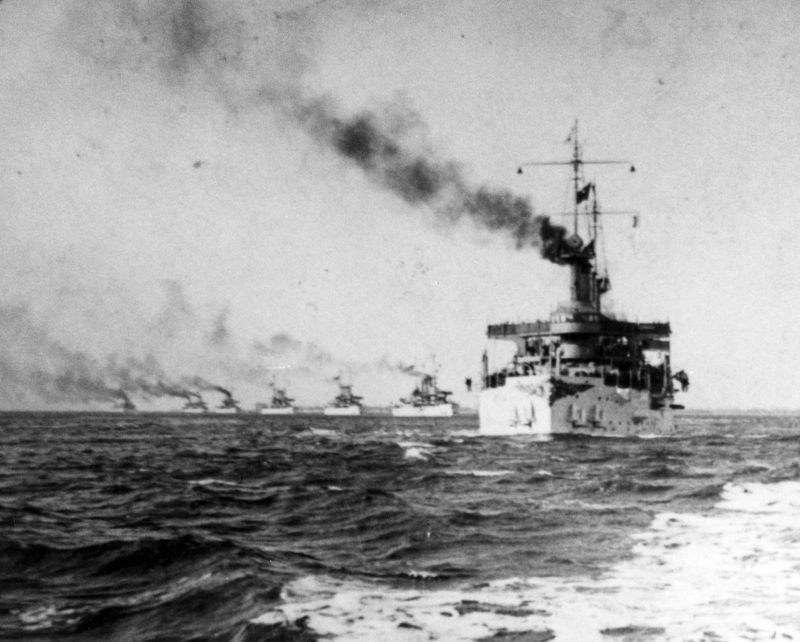
More broadly, as a naval pageant, the Great White Fleet was President Theodore Roosevelt’s attempt to mark America’s emergence as a maritime power with intercontinental reach. Although the fleet’s battleships were being superseded as it cruised around the world – courtesy of the revolutionary HMS Dreadnought, commissioned in December 1906 – the Great White Fleet represented the growing confidence and industrial might of the USA (as most of its vessels had been commissioned over the preceding five years). Its progress titillated the American public, just as much as those in foreign ports witnessing its arrival marvelled in awe of its scale. It was an operation par excellence in what is today called defence engagement.
As HMS Queen Elizabeth becomes operational, Britain should follow through on the ambitions of past ministers and put together its own Great White Fleet – or, more accurately, a Great Grey Fleet. This Great Grey Fleet would include as its centrepiece HMS Queen Elizabeth, equipped with F-35B Lightning II stealth combat jets and various helicopters. It would also include two Daring Class (Type 45) destroyers, two Duke Class (Type 23) frigates, an Astute Class nuclear-powered attack submarine, along with a Tide Class and other fleet replenishment vessels from the Royal Fleet Auxiliary (RFA).

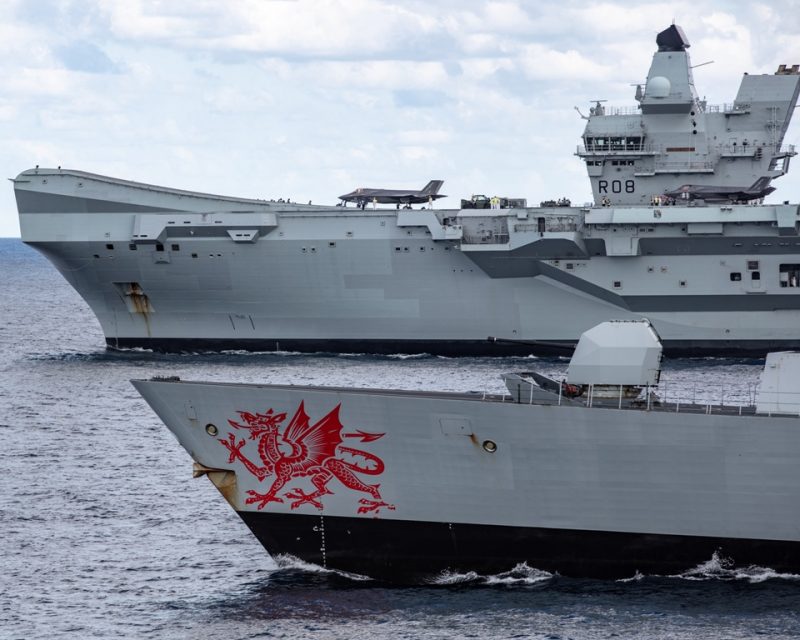
This British naval group would have a similarly ambitious agenda to its American counterpart over a century ago. It would cruise from the British home islands to the Mediterranean, on to the Gulf, then across the Indian Ocean, before sailing down through the Strait of Malacca to reach the Pacific. It could stop off in, or outside, numerous ports, including those in: Gibraltar, Spain, France, Malta, Italy, Egypt, Oman, Bahrain, India, Sri Lanka, Singapore, Vietnam, South Korea, Japan, Indonesia, Australia and New Zealand. It could even go further still, taking in a tour of the Americas, with goodwill calls to ports on America’s Pacific coast (including Hawaii), Panama, Peru, Chile, the Falkland Islands, Argentina, Brazil, the British Virgin Islands, Jamaica, America’s Atlantic coast (including Miami and New York City) and Iceland, before making a big event of returning home to Portsmouth. These, by now famous, vessels could then disperse to the other home bases of Devonport, Falmouth and the Clyde to be greeted by the public.
To broaden its strategic effect, the Great Grey Fleet should be designed to draw in as many like-minded countries as possible. HMS Queen Elizabeth would act as the hub around which other navies could rotate, supplementing the USA by projecting the resolve of the democratic world. The Netherlands has already expressed interest in sending a frigate to escort the supercarrier on its maiden voyage, while the US may send aircraft and vessels to support. Other allies and partners – Australia, additional European countries, India, and Japan among them – could be invited to participate, even to take part in joint exercises, as the fleet cruises in the Indo-Pacific. This would demonstrate Britain’s ability to organise and command potential coalitions of the willing to uphold the rules-based international system, while sending a powerful message to those who might otherwise contemplate revisionist action.
Moreover, the Great Grey Fleet would compound the military presence – and political impact – of smaller, forward-deployed Royal Navy warships. In his book ‘Seapower’, the naval historian Geoffrey Till argues: ‘A little British gunboat puttering along a river in China during the nineteenth century was powerful because it was the symbol of a mighty world empire, not because of the popgun on its prow or its tiny crew.’ Today, while Britain no longer reigns over a global empire, as a major power it still needs its forward-deployed naval assets to uphold its national interests and exert a deterring influence. By demonstrating the ability – after almost a decade – to replace a frigate or coastal patrol vessel with a carrier strike group, particularly one involving other countries’ naval assets, would compound the Royal Navy’s strategic and political impact, thereby amplifying Britain’s voice in the world’s corridors of power.
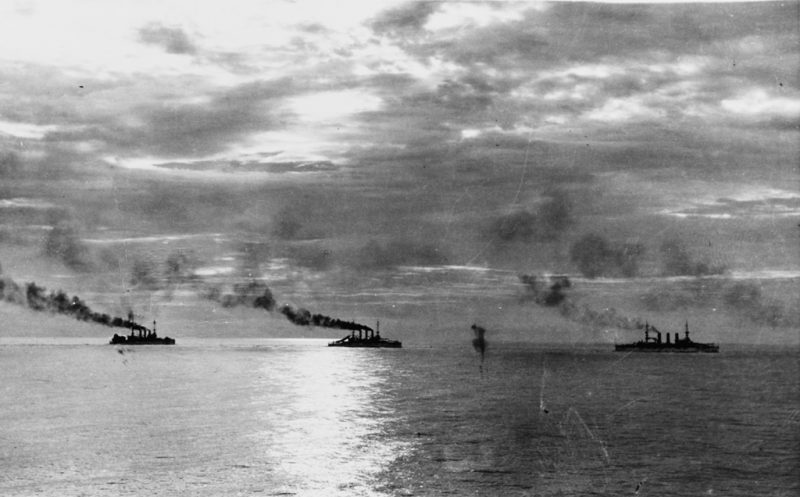
Photo: Collection of Lt Cdr Richard Wainwright/US NHHC.
The Great Grey Fleet would also have diplomatic, economic and cultural resonance, above and beyond its military utility. As it passes through foreign ports, the aircraft carrier would host diplomatic dinners, receptions and parties at night, while opening its doors as a mobile tourist attraction during the day. British industry and businesses could also showcase their wares as the fleet reaches key destinations, with ‘GREAT Britain’ campaigns being held on HMS Queen Elizabeth’s enormous flight-deck. In the most important foreign ports, British ministers could fly out to give speeches reaffirming the UK’s global interests and commitments, similarly to the way to which Theresa May, the former Prime Minister, gave a speech to commission the vessel at Portsmouth in 2017. Television cameras could also follow the fleet as it cruises around the world, just as they did in the BBC television series ‘Britain’s Biggest Warship’, reducing the so-called ‘sea-blindness’ of the British people that is said to have rendered the Royal Navy invisible to the majority of the population.
Undoubtedly, such a voyage would have its detractors: some would stress the financial cost, others would counsel against ‘provocation’, not least in relation to China’s recent threats, while others still would focus on the growing vulnerability of large naval assets. These voices should be ignored: the cost of such a fleet would be regenerated as it drums up sales for British manufacturers and service providers as it moves around the world. Equally, this peaceful fleet would not ‘provoke’ anyone; it would instead draw countries together in mutual cooperation and help underpin the rules-based international system. And while new anti-access and area-denial capabilities (such as advanced missiles, surveillance and artificial intelligence) may render the largest naval assets more vulnerable in the years ahead, active counter-measures – including Direct Energy Weapons – are already being developed.
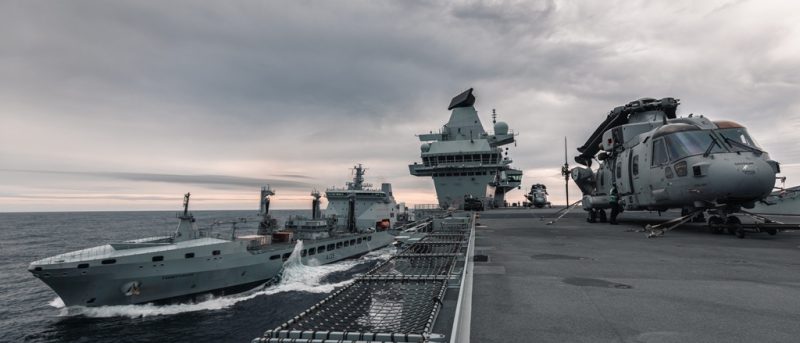

So, why hold back? In an age of rising state competition, when the boundaries between peace and war are being blurred like no time since the Cold War, a Great Grey Fleet would signal to the world Britain’s comeback. The operationalisation of HMS Queen Elizabeth offers a once-in-a-lifetime opportunity for the UK, after many years of political discord and introspection, to reassert itself on the global stage. By spearheading the emergence of ‘Global Britain’, it would confirm the reach of British power when the country’s military capability and national resolve have come into question in many nations, including both friends and adversaries. And it would also remind Britons of the continued importance of seapower.
-
James Rogers is the Director of the Global Britain Programme at the Henry Jackson Society. Previously, he held several positions at the Baltic Defence College in Tartu, Estonia, including as Acting Dean. He has also worked on research projects for several other institutions, including the Development, Concepts and Doctrine Centre at the Ministry of Defence, the European Union’s Institute for Security Studies, and RAND Europe.

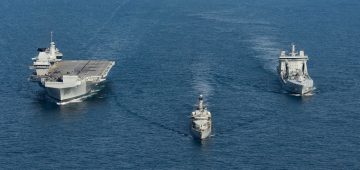




Comments
Sorry, comments are closed for this item